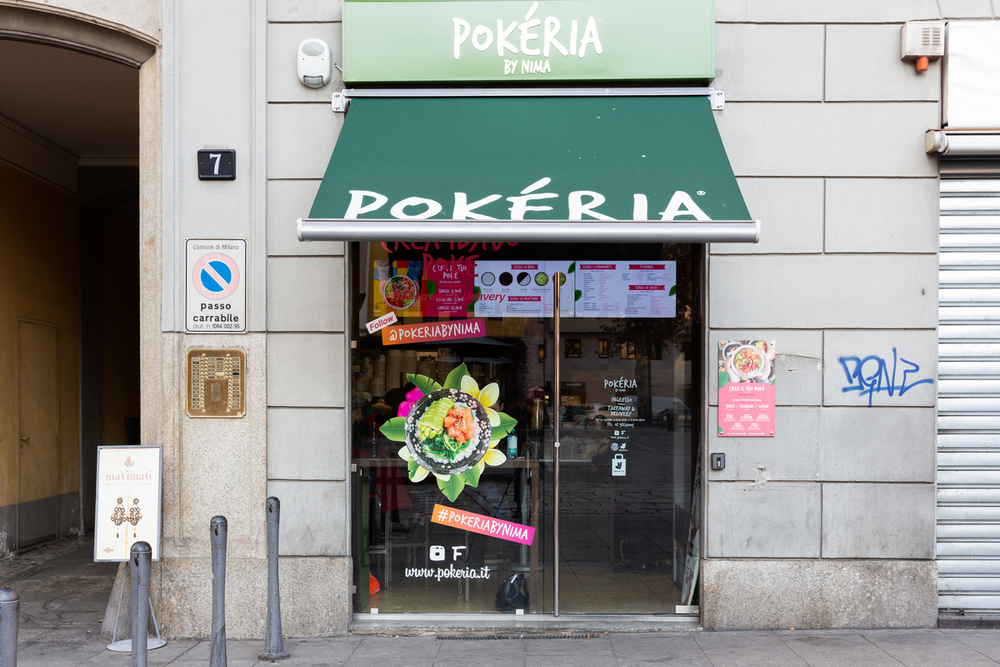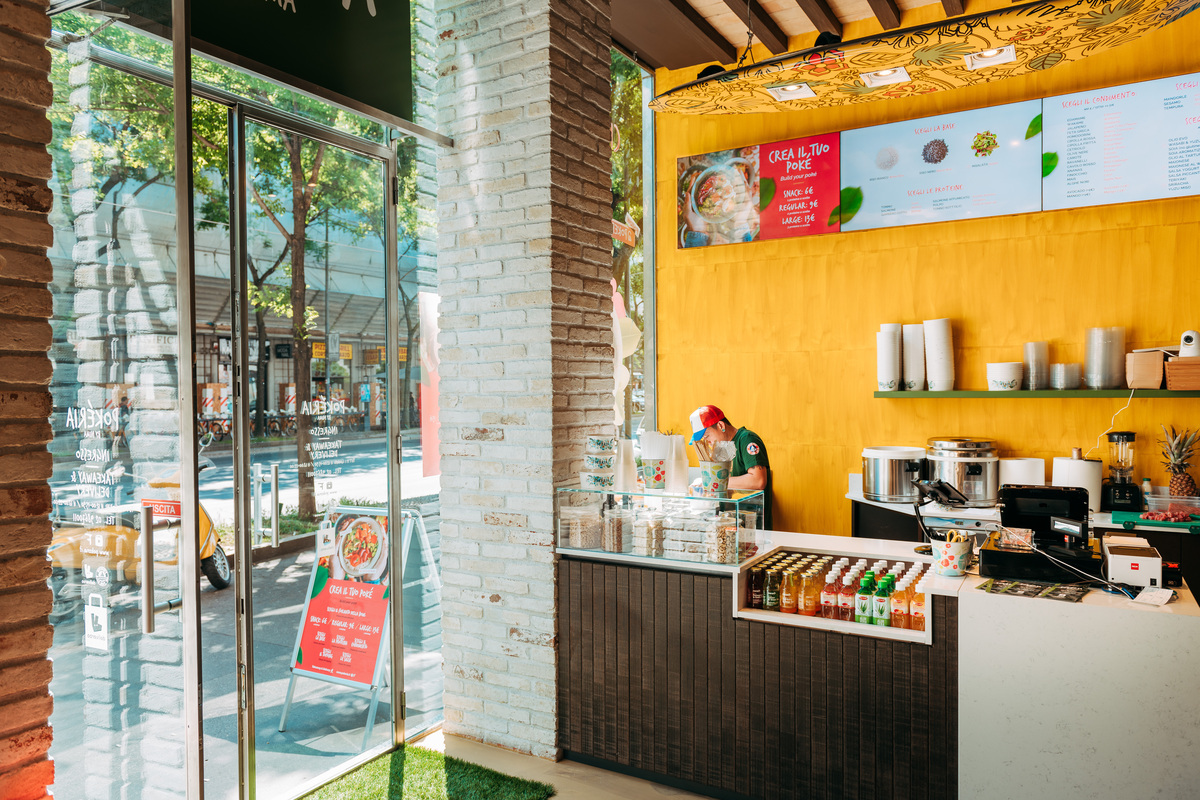Pokéria by NIMA
Background
A certified sustainable seafood takeaway and delivery chain, Pokéria by NIMA brings Hawaiian-style cuisine to Italy. An unusual mix of flavours for the region, the meals are made with a combination of raw fish and Italian ingredients served with rice or meat. Growing in popularity in non-native regions, these Poké bowls are a healthy choice for those looking for a delicious, affordable meal that is quick to serve. Pokéria by NIMA Italy has restaurants located in Milan and Florence, with a vision to expand.
Challenge
Introducing the Poké bowl to a nation that takes great pride in their local recipes and simple ingredients was the number one challenge here. A totally new concept in cuisine, no words could do the meals justice without a clear visual representation. Pokéria needed to communicate their menus in a dynamic, easy to understand way within its restaurants to entice new customers and to inspire existing customers.
The versatility offered by Philips allowed us to create the perfect solution for a dynamic menu.

Solution
Pokéria by NIMA teamed up with Kemcomm, 3G Electronics and PPDS for the perfect result. Videowalls were installed in each restaurant to create a dynamic menu board powered by a BrightSign player and WallSign software – both made possible through the built-in Android SoC featured in the Philips X-Line displays. With this new set-up, Pokéria by NIMA can update the content locally or remotely at each restaurant, and also centrally throughout the chain. Updates are simple to create and manage, and can be pushed live immediately – making it ideal for special offers or menu changes based on ingredient availability. Social content can also be pushed to the screens by restaurant staff and customers.
Benefits
Versatile compatibility: Advanced software compatibility makes each Philips X-Line display ready for external management tools. Custom BrightSign and WallSign seamlessly connect to the one dashboard through the built-in Android player allowing for synchronised or split content across the Videowalls.
Content tagging: To manage the large number of Pokéria content, tags can be implemented to make searching for the right piece of communication quick and instant. Tagged content can then be scheduled to be pushed live automatically when needed.
Social integration: Social content can be displayed on screen by staff and customers. Easy to use filters will block or publish content without a need for a moderator.
Central control: Content can be updated at restaurant level either locally or remotely. Updates can also be pushed across all restaurants through a central location.
Dynamic content: Menu items and ingredients can be updated instantly to accommodate offers, out of stock items and new specials.
_04.jpg/1000)

